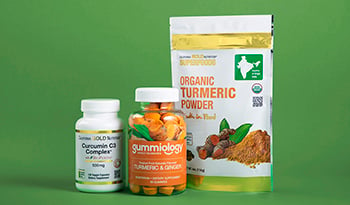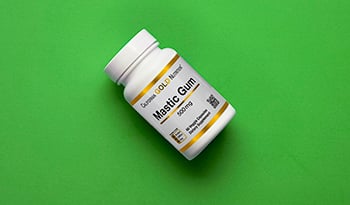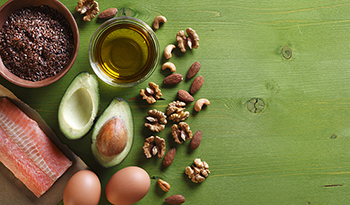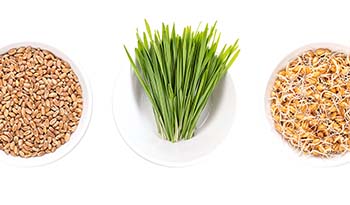A 5-Minute Guide to Potassium: Benefits, Deficiency, and More

What is Potassium?
Potassium is one of the electrolytes — mineral salts that can conduct electricity when they are dissolved in water. Electrolytes are always found in pairs; a positive molecule like sodium or potassium is always accompanied by a negative molecule like chloride.
What Does Potassium Do?
Potassium works closely with sodium and together they play a huge role in the health of every cell as well as in regulating blood pressure, bone health, and chronic disease risk.
Potassium is involved in the maintenance of:
- Water Balance And Distribution
- Acid-base Balance
- Muscle And Nerve Cell Function
- Heart Function
- Kidney And Adrenal Function
What is the Sodium-Potassium Pump?
Cells throughout our body have a pump, the sodium-potassium pump. Powered by chemical energy in the form of ATP, the pump moves sodium out of our cells and potassium in. In each cycle of the pump, three sodium ions are exported and two potassium ions are imported into the cell. A diet that is too high in sodium and low in potassium makes the job of this pump more difficult. Keep in mind that over 95% of the potassium in the body is found within cells.1,2
The average daily intake of sodium is between 2,500 and 7,500 mg and is mostly obtained as sodium chloride or salt. Much of this high salt intake is hidden in processed or prepared foods, but it amounts to between one to three teaspoons of salt per day. How much sodium does our body need each day? Amazingly only about 200 mg or roughly 10-30 times less than average intake.
In contrast, in the United States and many other countries, the average daily potassium intake is less than 2,500 mg a day. That amount is about half of the 4,700 mg recommended intake level for adults made by many health organizations.
The sodium-potassium pump also functions to maintain the electrical charge within the cell; which is particularly important to muscle and nerve cells. During nerve transmission and muscle contraction, potassium exits the cell and sodium enters, resulting in a change in electrical charge. This change is what causes a nerve impulse or muscle contraction. It is not surprising that a potassium deficiency affects muscles and nerves first.
What are the Symptoms of a Potassium Deficiency?
Potassium deficiency is characterized by muscle cramps, mental confusion, irritability, and heart disturbances. Fatigue and muscle weakness are also among the first symptoms of a potassium deficiency.
These symptoms reflect lower levels of energy stores in muscles. Potassium is essential for the conversion of blood sugar into glycogen, the storage form of blood sugar found in the muscles and liver. A potassium shortage results in lower levels of stored glycogen. Because glycogen is used by exercising muscles for energy, a potassium deficiency will produce significant fatigue and muscle weakness.
In addition to decreased dietary intake of potassium causing deficiency, it can also be the result of excessive fluid loss (sweating, diarrhea, or urination); or the use of diuretics, laxatives, aspirin, and other drugs. The amount of potassium lost in sweat can be quite significant, especially if the exercise is prolonged in a warm environment. Athletes or people who exercise regularly may have higher potassium needs.
Why is the Dietary Ratio of Potassium to Sodium Important?
The balance of sodium and potassium is extremely important to human health.3 Too much sodium in the diet can lead to disruption of this balance. Most Americans have a dietary potassium-to-sodium (K:Na) ratio of less than 1:2. This means most people ingest twice as much sodium as potassium. However, for good health, that ratio needs to be flipped. We need to be consuming at least twice as much potassium as sodium in our diet, or better yet, even higher. A higher ratio is easy to achieve if the diet is rich in fruits and vegetables as most of these foods have a K:Na ratio of greater than 100:1.
Sodium and potassium levels and K:Na ratio in these common fruits and vegetables.
Food | Amount | Potassium (mg) | Sodium (mg) | Potassium:Sodium ratio |
Avocado | ½ medium | 487 | 7 | 69:1 |
Banana, raw | 1 medium | 422 | 1 | 422:1 |
Black beans, cooked without salt | ½ cup | 305 | 1 | 305:1 |
Brussels sprouts, steamed | ½ cup | 248 | 7 | 35:1 |
Cantaloupe | ¼ medium | 368 | 22 | 17:1 |
Carrots, raw | ½ cup | 205 | 44 | 5:1 |
Orange | 1 medium | 232 | 1 | 232:1 |
Potato, baked with skin | 1 medium | 926 | 17 | 54:1 |
Raisins | ½ cup | 543 | 8 | 68:1 |
Spinach, boiled | ½ cup | 420 | 63 | 7:1 |
Source: USDA National Nutrient Database | ||||
How Does Potassium Help Support Healthy Blood Pressure Control?
Ideally, the kidneys respond to excess sodium by excreting it into the urine, but in the process will also excrete potassium. And if potassium levels are low, the kidneys are conflicted.
The kidneys are responsible for the body holding onto potassium, especially if levels are low. So, even if sodium levels are high, the kidneys will not be able to excrete the excess sodium if potassium levels are low because it will also mean losing potassium. The result is the body holding onto sodium and the retention of water to balance out the sodium.
This increases the amount of water in the body and the volume of blood in circulation. Blood pressure is similar to water pressure as it passes through a garden hose. Increasing the water volume is like turning up the faucet. If the arteries are stiff or constricted, pressure will increase, and as blood pressure climbs, and the heart must work harder. Excess sodium also blunts the ability of blood vessels to relax and contract with ease, which is also made worse by low potassium intake.
Numerous studies have demonstrated that a low-potassium, high-sodium diet plays a major role in many cases of high blood pressure thereby increasing the risk of having a heart attack or stroke. On the other hand, a diet that is high in potassium and low in sodium can be associated with helping in fighting against high blood pressure.
While many double-blind studies have shown that potassium supplementation alone can produce significant benefits in helping people control blood pressure, for best results it should be combined with sodium restriction. Typically studies with potassium have utilized dosages ranging from 2.5 g to 5.0 g per day or have involved substituting high-potassium, low-sodium table salt for sodium chloride. Ideally, sodium intake should be less than 800 mg daily, but positive results have been seen with sodium intake restricted to less than 1,500 mg per day if the dietary potassium intake is sufficient.3-5
How Much Potassium Do I Need?
Potassium dietary supplements are either potassium salts (chloride and bicarbonate), potassium bound to various mineral chelates (e.g., aspartate, citrate, etc.), or food-based potassium sources. The US Food and Drug Administration restricts the amount of potassium available in capsules and tablets to a mere 99 mg per dose because when potassium is given in a pill form at higher dosages it can cause nausea, vomiting, diarrhea, and ulcers. However, using a high potassium, low sodium salt has been shown to be a fantastic way to increase potassium and lower sodium intake. Salt substitutes providing potassium chloride can provide 240 to 530 mg of potassium per 1/4 teaspoon.
The minimum recommended dietary intake for potassium is currently 2,400 mg for women and 3,400 mg for men. If body potassium requirements are not being met through diet, supplementation is essential. When potassium needs are not adequately being met by diet alone, prescription potassium salts are commonly prescribed by physicians in the dosage range of 1.5 g to 3.0 g per day.
Are There Any Side Effects with Potassium?
Generally, potassium supplementation is well-tolerated. Potassium supplementation (unless supervised by a physician) is contraindicated in patients with severe kidney disease or those taking a number of prescription medications including digoxin (Lanoxin), potassium-sparing diuretics (Aldactone, Dyrenium, and Midamor), and the angiotensin-converting enzyme inhibitor class of blood pressure-lowering drugs (e.g., Vasotec, Zestril, Capoten, Lotensin, etc.). Use of these drugs with potassium supplementation can lead to potassium toxicity.
References:
- Weaver CM. Potassium and health. Adv Nutr. 2013 May 1;4(3):368S-77S.
- He FJ, MacGregor GA. Beneficial effects of potassium on human health. Physiol Plant. 2008 Aug;133(4):725-35.
- Perez V, Chang ET. Sodium-to-potassium ratio and blood pressure, hypertension, and related factors. Adv Nutr. 2014 Nov 14;5(6):712-41.
- Burnier M. Should we eat more potassium to better control blood pressure in hypertension? Nephrol Dial Transplant. 2019 Feb 1;34(2):184-193.
- Aaron KJ, Sanders PW. Role of dietary salt and potassium intake in cardiovascular health and disease: a review of the evidence. Mayo Clin Proc. 2013 Sep;88(9):987-95.
DISCLAIMER:This Wellness Hub does not intend to provide diagnosis...














































































 Table of Contents
Table of Contents















